Showing Spotlights 1473 - 1480 of 2780 in category All (newest first):
 An international group of researchers reported a new record long distance for quantum teleportation. The authors claim a free-space distance of 143 kilometers. Quantum teleportation communicates physical information soundly without traveling directly through the space connecting the communicating parties. The reporting team includes quantum teleportation pioneer Anton Zeilinger of the Quantum Optics, Quantum Nanophysics, Quantum Information at the University of Vienna. Quantum teleportation combines classical and quantum information channels to transmit the complex state of quantum particles. The communication method conveys complete quantum information without the need to pass directly through the space between communicating parties.
An international group of researchers reported a new record long distance for quantum teleportation. The authors claim a free-space distance of 143 kilometers. Quantum teleportation communicates physical information soundly without traveling directly through the space connecting the communicating parties. The reporting team includes quantum teleportation pioneer Anton Zeilinger of the Quantum Optics, Quantum Nanophysics, Quantum Information at the University of Vienna. Quantum teleportation combines classical and quantum information channels to transmit the complex state of quantum particles. The communication method conveys complete quantum information without the need to pass directly through the space between communicating parties.
Jun 4th, 2012
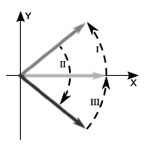 New research explores the uses of time reversal symmetry in optics, with a focus on quantum optics. The article compares time reversal with optical phase conjugation, and illustrates the concept of time reversal symmetry with several examples in classical and quantum optics. Time reversal symmetry is the physical property that events can occur in a forward or backward direction through time, with no fundamental distinction due to the direction. Time reversal symmetry applies to both classical and quantum optics, as well as areas of physics outside of optics. The property holds true in all areas of physics, with possible exceptions only under rare conditions in particle physics.
New research explores the uses of time reversal symmetry in optics, with a focus on quantum optics. The article compares time reversal with optical phase conjugation, and illustrates the concept of time reversal symmetry with several examples in classical and quantum optics. Time reversal symmetry is the physical property that events can occur in a forward or backward direction through time, with no fundamental distinction due to the direction. Time reversal symmetry applies to both classical and quantum optics, as well as areas of physics outside of optics. The property holds true in all areas of physics, with possible exceptions only under rare conditions in particle physics.
Jun 1st, 2012
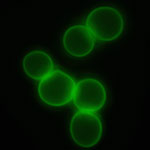 Modifying living cell by coating them with a nanolayer of functional materials in order to provide them with new structural and functional features has developed into a popular research area for bionanotechnology researchers. In contrast to genetic manipulation techniques, here the functionality of a cell is modified simply by attaching polymers or nanoparticles to the cell's surface. A recent Perspective paper covers the most interesting and promising work in this area and presents an outlook the major potential future directions. The article focuses on on cell encapsulation with Layer-by-Layer (LbL) self-assembly via sequential adsorption of oppositely charged components: polyelectrolytes, nanoparticles, and proteins.
Modifying living cell by coating them with a nanolayer of functional materials in order to provide them with new structural and functional features has developed into a popular research area for bionanotechnology researchers. In contrast to genetic manipulation techniques, here the functionality of a cell is modified simply by attaching polymers or nanoparticles to the cell's surface. A recent Perspective paper covers the most interesting and promising work in this area and presents an outlook the major potential future directions. The article focuses on on cell encapsulation with Layer-by-Layer (LbL) self-assembly via sequential adsorption of oppositely charged components: polyelectrolytes, nanoparticles, and proteins.
May 29th, 2012
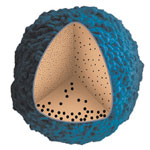 Researchers in China showed that nanoparticles smaller than 10 nm in diameter accumulate more efficiently and penetrate more deeply in tumors relative to their larger counterparts. Their findings have significant implications for the development of nanomaterials to diagnose and treat cancer. The enhanced tumor accumulation of the ultrasmall nanoparticles may be due, at least in part, to their prolonged blood circulation time. In contrast, most nanomaterials that enter the blood are rapidly cleared by tissue-resident macrophages in the liver and spleen. Ultimately, the ability of ultrasmall nanoparticles to diffuse deep within the tumor bulk may enable the design of nanoparticles that can carry therapeutic and diagnostic agents more efficiently into tumors.
Researchers in China showed that nanoparticles smaller than 10 nm in diameter accumulate more efficiently and penetrate more deeply in tumors relative to their larger counterparts. Their findings have significant implications for the development of nanomaterials to diagnose and treat cancer. The enhanced tumor accumulation of the ultrasmall nanoparticles may be due, at least in part, to their prolonged blood circulation time. In contrast, most nanomaterials that enter the blood are rapidly cleared by tissue-resident macrophages in the liver and spleen. Ultimately, the ability of ultrasmall nanoparticles to diffuse deep within the tumor bulk may enable the design of nanoparticles that can carry therapeutic and diagnostic agents more efficiently into tumors.
May 28th, 2012
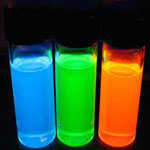 A substance might potentially be harmful or even toxic for a biological system, provided that the quantity or the concentration (the "dose") is high enough. This principle forms the basis for health standards which determine the maximum permissible concentration of contaminations, for example in food, water or in the environment. Dose calculation is of high relevance for risk assessment as well as for regulations, for instance to determine the maximum allowable concentration of chemicals and particles or to determine other limits which do not cause health problems. In the case of nanomaterials, especially for nanoparticles there is to date, no limit regulation or any other regulation referring to dose, because the definition of dose for nanoparticles does not exist. The wherefores will be explained in this dossier.
A substance might potentially be harmful or even toxic for a biological system, provided that the quantity or the concentration (the "dose") is high enough. This principle forms the basis for health standards which determine the maximum permissible concentration of contaminations, for example in food, water or in the environment. Dose calculation is of high relevance for risk assessment as well as for regulations, for instance to determine the maximum allowable concentration of chemicals and particles or to determine other limits which do not cause health problems. In the case of nanomaterials, especially for nanoparticles there is to date, no limit regulation or any other regulation referring to dose, because the definition of dose for nanoparticles does not exist. The wherefores will be explained in this dossier.
May 24th, 2012
 Risks are high on the agenda in our society, to the extent that we might refer to the society as a risk society. Our society experiences emerging technologies, like nanotechnology. Different actors respond to this in a variety of ways. Among these are the consumers, an important, but neglected category of actors in this context. Arguably it is in our role as consumers we first encountered nanotechnology, in the form of nano-enabled products at the consumers market. What consumers think and do, reacting to the mixed messages about benefits and risks of nanotechnology, contributes to how the risk society (with regard to nanotechnology) is developed, and in that sense becomes operationalized. The theme of this thesis is not just the responses of consumers (and how others perceive these) to the introduction of nanotechnology, but also a case study of how the risk society can be operationalized.
Risks are high on the agenda in our society, to the extent that we might refer to the society as a risk society. Our society experiences emerging technologies, like nanotechnology. Different actors respond to this in a variety of ways. Among these are the consumers, an important, but neglected category of actors in this context. Arguably it is in our role as consumers we first encountered nanotechnology, in the form of nano-enabled products at the consumers market. What consumers think and do, reacting to the mixed messages about benefits and risks of nanotechnology, contributes to how the risk society (with regard to nanotechnology) is developed, and in that sense becomes operationalized. The theme of this thesis is not just the responses of consumers (and how others perceive these) to the introduction of nanotechnology, but also a case study of how the risk society can be operationalized.
May 22nd, 2012
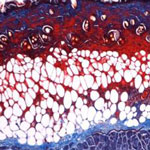 Candida albicans is a leading fungal cause of burn infections in hospital settings. The prevalence of invasive candidiasis in burn cases varies widely, but it accounts as high as 23% of severe infection with a mortality rate ranging from anywhere to 14% to 70%. In a recent pre-clinical study, a nitric oxide releasing nanoparticle platform, which has previously been shown to be antibacterial to both gram positive and negative bacteria, as well as an accelerator of wound healing in excisional animal models, was found to be efficacious in clearing candidal burn infections in mice. This study represents one of many pre-clinical investigations demonstrating the efficacy of the NO nanoparticles as a broad spectrum antimicrobial agent as well as wound healing accelerant.
Candida albicans is a leading fungal cause of burn infections in hospital settings. The prevalence of invasive candidiasis in burn cases varies widely, but it accounts as high as 23% of severe infection with a mortality rate ranging from anywhere to 14% to 70%. In a recent pre-clinical study, a nitric oxide releasing nanoparticle platform, which has previously been shown to be antibacterial to both gram positive and negative bacteria, as well as an accelerator of wound healing in excisional animal models, was found to be efficacious in clearing candidal burn infections in mice. This study represents one of many pre-clinical investigations demonstrating the efficacy of the NO nanoparticles as a broad spectrum antimicrobial agent as well as wound healing accelerant.
May 21st, 2012
 Nanotechnology-based food and health products and food packaging materials are available to consumers in some countries already, and additional products and applications are currently in the research and development stage, and some may reach the market soon. In view of such progress, it is expected that nanotechnology-derived food products will be increasingly available to consumers worldwide in the coming years. Some of these products appear to already be in commercial use in other countries, raising the likelihood that they could become a part of our food supply in the near future, if they are not already. This article looks at how regulators are dealing with the pressures to commercialize nanotech foods and food packaging.
Nanotechnology-based food and health products and food packaging materials are available to consumers in some countries already, and additional products and applications are currently in the research and development stage, and some may reach the market soon. In view of such progress, it is expected that nanotechnology-derived food products will be increasingly available to consumers worldwide in the coming years. Some of these products appear to already be in commercial use in other countries, raising the likelihood that they could become a part of our food supply in the near future, if they are not already. This article looks at how regulators are dealing with the pressures to commercialize nanotech foods and food packaging.
May 16th, 2012
 An international group of researchers reported a new record long distance for quantum teleportation. The authors claim a free-space distance of 143 kilometers. Quantum teleportation communicates physical information soundly without traveling directly through the space connecting the communicating parties. The reporting team includes quantum teleportation pioneer Anton Zeilinger of the Quantum Optics, Quantum Nanophysics, Quantum Information at the University of Vienna. Quantum teleportation combines classical and quantum information channels to transmit the complex state of quantum particles. The communication method conveys complete quantum information without the need to pass directly through the space between communicating parties.
An international group of researchers reported a new record long distance for quantum teleportation. The authors claim a free-space distance of 143 kilometers. Quantum teleportation communicates physical information soundly without traveling directly through the space connecting the communicating parties. The reporting team includes quantum teleportation pioneer Anton Zeilinger of the Quantum Optics, Quantum Nanophysics, Quantum Information at the University of Vienna. Quantum teleportation combines classical and quantum information channels to transmit the complex state of quantum particles. The communication method conveys complete quantum information without the need to pass directly through the space between communicating parties.
 Subscribe to our Nanotechnology Spotlight feed
Subscribe to our Nanotechnology Spotlight feed





